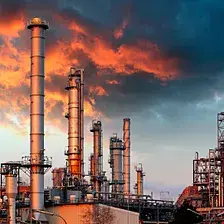cross-posted from: https://slrpnk.net/post/24690127
Solar energy experts in Germany are putting sun-catching cells under the magnifying glass with astounding results, according to multiple reports.
The Fraunhofer Institute for Solar Energy Systems team is perfecting the use of lenses to concentrate sunlight onto solar panels, reducing size and costs while increasing performance, Interesting Engineering and PV Magazine reported.
The “technology has the potential to contribute to the energy transition, facilitating the shift toward more sustainable and renewable energy sources by combining minimal carbon footprint and energy demand with low levelized cost of electricity,” the researchers wrote in a study published by the IEEE Journal of Photovoltaics.
The sun-catcher is called a micro-concentrating photovoltaic, or CPV, cell. The lens makes it different from standard solar panels that convert sunlight to energy with average efficiency rates around 20%, per MarketWatch. Fraunhofer’s improved CPV cell has an astounding 36% rate in ideal conditions and is made with lower-cost parts. It cuts semiconductor materials “by a factor of 1,300 and reduces module areas by 30% compared to current state-of-the-art CPV systems,” per IE.
at this point it doesnt matter. theres no saving us from extinction due to climate change. this serves only for the intermediate period where we can “save” some money on energy day to day, before the inevitable collapse that makes money and savings worthless.
dont get me wrong, if i could afford a house, let alone additional panels and the additional fees that come with installation, maintenance, regulations, licensing, etc. then id be all in, even if it was just to contribute to the dying ideal that there was some semblence of hope for a better future. this is up to the landlords and the upperclass to give a shit about, and most of it is for grandstanding and keeping up with the joneses.
i used to install these for a living during covid. only people in my area who could afford them were multigenerational farmers and eco concious suburbanites. even for the suburbanites living in million+ dollar homes it was a stretch financially, and a hastle due to regulations.
good idea. but a bit late. we are at the point that if someone waved a magic wand tomorrow, and everyone stopped driving cars and pulled a full 180 on coal, oil, and gas, it would still be far too late.
if you can afford the inevitable markup that comes with proffessional installation. be my guest. if you are a poor person wanting to slap some panels on a tiny home, go nuts. just dont expect to save the world by doing so. its fucked. live how you want to while you can. drink, fuck, fight, eat good food, play video games, bed rot and consume to your hearts content.
nothing can save us. not even the “indomitable will of the human spirit” not a god damned thing.
sorry to shit in your salad. but thems the breaks.
They need changes in laws too. Instead of chewing up open space and farmland I’d rather see more urban areas used like parking lots and industrial sites.
Yeah, Don’t put the solar farms in meadows, or on mountains. put them on warehouse roofs, over highways, over parking lots, on government buildings, etc etc.
Roughly 50% of germany is used as farmland. On 60% of the farmland crops to feed livestock are grown. On 20% of it crops for energyproduction (biofuel, biogas). If you take for example rapeseeds, used for biodiesel, you would harvest around 50 times as much energy with a pv-plant on the same area. You would need to install pv on 5-6% of the farmland to produce enough electric energy for all of germany for a year. Granted you also can provide the grid for it and enoguh storage.
US Government - not on my watch…
https://ieeexplore.ieee.org/document/10938951
This is 36% MODULE efficiency with expensive cooling. 30% actual year long efficiency without it. Requires dual axis tracking. Seems heavy as its very tall/deep.
Headline of cost reduction is very unlikely. Especially on a per acre/fairly large area basis. Dual axis tracking requires more spacing than fixed orientation rows, and loses benefits under cloudy conditions. While power at 7am and 5pm is more valuable when competing against high penetration solar, batteries are now more competitive than tracking, and can serve edge of day and night power needs. Tracking solar tends not to be built anymore, due to low cost of panels. The cooling infrastructure is also not as useful as it is on rooftops because the heat capture has useful benefits for homes.
It is also unclear how this has advantage over parabolic mirror.
Agri PV is a real use case, where more free land means more land use, even if most of it gets more shade, except around noon.
Solar panels as fences is what is needed.
Urban shade
It’s viable as edge of day high power boost in east/west direction, and simply any extra power that is cheap and easy to install, that adds privacy or keeps the controlled beings inside.
Kinda works if you use bifacial panels.
Bifacial panels as a fence provides 3% extra yield but 30% extra revenue
https://www.gridcog.com/blog/solar-fence-vs-ground-mount-solar
Sure, but if you wanted solar panels to work on both sides of your East/West facing fence, you’d have to buy 100% more panels, so bifacial saves you 70% there. Seems like a good deal. I’m sure you read the “Model Overview” of that article and caught that the monofacial panels were facing the equator, and the bifacial panels were facing East/West…
Edit: bad read on my part, I didn’t not understad the full content of the previous message.
I don’t think we are arguing. I was just giving you more details.
My interpretation of your comment was that bifacial solar panels are a useless gimmick which allows companies to charge more for a cheaper product.
Is that correct?
No, the opposite. They are superior. Bifacial panels have a 3% additional yield over standard panels. The +10-20% cost premium is covered by the +30% revenue
Even with traditional mountings, Bifacial panels pick up extra light reflected from the ground.
You are at least completely and utterly wrong about tracking solar not typically being built anymore. Any major solar site uses tracking if you have a couple acres on a corner maybe not but I think you are being a bit too general. Panels are only one of many costs per solar panel installation, its still cost effective overall to increase efficiency.
You’re right about US. seems half uses tracking. No numbers on China which is 30x larger market. Economics still only make sense at consumer level of $1/watt panel prices, to me, but I guess there are reasons I don’t understand.
Banned in North America in 3… 2…
Oh don’t worry, I’m sure the capitalist system will manage to fuck it up somehow.
“If we allow german solar panels into america it will destroy our good hard working american businesses. Tarriffs on german solar panels of 69%!”
“The lens makes it different from standard solar panels that convert sunlight to energy with average efficiency rates around 20%, per MarketWatch. Fraunhofer’s improved CPV cell has an astounding 36% rate in ideal conditions”
Why would I want to compare one panel’s average efficiency to another panels efficiency in ideal conditions?
Marketing. Fresnel lenses are not going to do well with diffuse light.
Maybe I’m misunderstanding but wouldn’t diffuse light be what it’s going to be best at? While it’d be worse on a sunny day when there is an optimal single direction for the light to come in?
It’s the opposite of a light house fresnel lens - instead of scattering the light source evenly out, it’ll capture diffuse incoming rays from random directions better and concentrate it on the photovoltaic cell? However it would be at the cost of being able to capture direct sunlight efficiently as only some of the lens would ever be in the best position to capture the direct rays?
wouldn’t diffuse light be what it’s going to be best at? While it’d be worse on a sunny day when there is an optimal single direction for the light to come in?
No. Concentrated solar requires perfect alignment, dual axis tracking, to the sun. diffuse light does not concentrate.
A reasonable alternative design would be cheap ordinary PV cells with outward bubbles instead of inverted parabolas that would capture off axis light better on a fixed tilt.
I have not read the article yet, but I will be doing so after posting this. But from what I understand, concentrated cells via lenses already exist. The problem with them was keeping them cool.
Going to go read the actual article now.
Edit: Well, the article was very sparse on details. From what I understand of the comments, what’s really been done here is making cells that can stand the kind of heat that would be focused onto them from the glass.
I want to say I saw a video about this a year ago or so, but it was more solar thermal, where you focus a bunch of mirrors onto a single point high up on a tower, and it’s cooled by molten salt. But as I said, that’s solar thermal, not solar power electricity.
I think their approach with module is 20-50x concentration instead of 500x, with cooling permitted to be module wide on air gap, as well as usual bottom cooling.
usual bottom cooling.
Nothing like it on a summer day.
Yeah the problem has always been that solar panels only really like to operate within a very narrow temperature band. It’s why you can’t just plate the Sahara desert in solar panels. In theory that would generate loads of power but the heat of the desert is way outside of their operating range.
There’s been loads of ideas to heat/cool solar panels, the problem up until now has always been to do that without cutting into the panel’s efficiency so much that it isn’t worth doing.
But there’s been videos on YouTube of people cooling solar panels with plasma cooling and phase change materials for a few years now.
the heat of the desert is way outside of their operating range.
I live in the Phoenix area, there are tons of solar installations here. In fact my house has solar, had it when we bought it 10 years ago, and it cuts the power bill in half.
I’ve been thinking about getting solar for a while, how bad is the efficiency loss at -30C to -20C?
They gain efficiency at lower temps. Cool, clear days are best. At negative 20C you’re looking at ~15-20% increase in power output from the panel itself. Look for the “temperature coefficient” on a solar module spec sheet.
Biosolar roofs work for rooftop applications
I thought this has already been done. Guess there’s some nuance to it that is above my understanding of it.
Anyhow, advancements in solar are cool in my book.
Hey it’s those guys that invented MP3s.
That was Fraunhofer IIS not ISE.
Fraunhofer IIS and Fraunhofer ISE are part of the same organization.
They are different institutes in the same Fraunhofer Society.
Lossy compression of sunlight?
It really whips the sun’s ass.
I’m not sure what to think about the Fraunhofer institute in general. They have made some nice discoveries/inventions in the past, such as audio compression algorithms and such. That is why i hyped them for a bit.
But they really disappointed me with their writings on solar panels in the past few years.
They said that the efficiency of solar panels today is too low to deploy them widely in practice, which is simply not true. They tried pushing Perovskite solar cells for no reason.
I’m not sure what to think about this article’s idea. On one hand, adding lenses to solar parks makes them significantly more complicated and therefore expensive to build. Also, if the parks have complicated physical forms, they’re more susceptible to wind, and that could damage them.
On the other hand, yes, adding lenses means you need fewer actual solar panels for the same amount of energy harvested.
I’ll therefore put it in the category of inconclusive inventions, together with the idea of adding a motor to the solar panels so they can track the sun. That would also make the solar panels more efficient, but also more complicated and more prone to mechanical failure.
I’d like to know what they’re going to do about the heating issue. Concentrating solar radiation carries with it an increased heat load. And heat reduces solar PV efficiency. I’m already losing about 30% in summer when the panels heat up.
This was my first question too! I thought heat makes them wear out faster.
It does. Also seems weird nobody thought of a magnifying glass before.
But its also the beauty in science. Now somebody else thought about it, and they might work harder to fix the next problem: Heat.
If that gets better now, solar panels will increase in output even more. There are so many technologies going into one product, and each field have its own experts.
I’m excited.
They probably did, but like they said, the heating is probably the issue.
I can see them adding a cooling element. Maybe even water cooling.
If they could implement water cooling, and then use the heated water in a central heating station for house warming, it would be genius.
well, adding lenses kinda requires motorizing the panels to track the sun, right? otherwise the “hot spot” is going to move around across the day/year
is there a way to shape the lens to mitigate this?
You make them convex.
You can shape them that no matter how the light falls on it, it will align to the center. Kind of like how satellite dishes work but in reverse.
You can shape them that no matter how the light falls on it, it will align to the center. Kind of like how satellite dishes work but in reverse.
how do you do this, actually? I’m curious about the details because I just watched a video on compound parabolic reflectors, haha
a regular (ideal) convex lens with a single focal point will have the image move around as the light source moves across the sky. AFAIK satellite dishes tend to be paraboloids, which focus parallel rays onto the focal point, and if you change the angle of the light source, you’ll start losing focus. Stuff like the DSN and radio telescopes absolutely do have to aim and track their targets (or are forced to follow the rotation of the earth).
satellite dishes that are aimed towards geostationary satellites don’t have to move (because their targets are stationary in the sky), while stuff like starlink tracks targets with a phased array.
Could have some refraction or hologram thing that bends the light the right way, maybe? Or like a matte glass that equalises the load.
Or why not just use (big) mirrors?
Won’t help with heat ofc!
Or why not just use (big) mirrors?
I mean, this is a thing with solar concentrators already, haha
and for those the heat is a feature :p
The only thing slowing down the transition from fossil fuels to renewables is the same impediment it has always been: oil money protecting itself.
Just wanted to drop a comment.
I love solar. It’s the best form of energy that’s attainable by the average person.
Wait for something fucking idiotic like:
“U.S. government to implement 5,000% tax on new solar technology…”
“also, revenue from new tax will be used to build new coal mines staffed by concentration camp inmates 1”
Solar is too woke and Marxist for the current US government.
Real men burn shit /s
Solar panels are already quite cheap. What we need is much cheaper grid forming inverters so we can stop destabilizing the grid with solar.
If the cost of panels drops significantly, there would be more capital available to spend on inverters, even if they stay at the current prices, still decreasing the cost of deployment. But yes. 😄
Grid forming will just mean the keep running the house when the power goes off, it’s not safe for them to be pushing power when it’s disappeared, that has been set by regulation in many countries.
Small scale installations on regular houses are probably not the best for grid forming. Any pv installation with grid forming capability would be required to give some control to the grid operator because it’s their job to keep the grid stable.
What you describe is more like black start, providing power to the grind when it is down. This has to be controlled well, and only a few plants need to be capable of it.
Grid following means something like whatever the grid does, the inverter injects power supporting it. A grid forming generator or inverter also follows the grid somewhat, but tries to get it to an optimal condition. This entails things like voltage control by reactive power, frequency control by operating reserve, fault ride trough capability and so on. Many of those are naturally provided by large conventional power plants using synchronous generators like gas, nuclear or hydro. For inverter based systems, they have to be considered explicitly. For battery storage most are relatively easy to implement, some also in solar inverters. The tech exists, but yes, in some countries the regulations have not kept up with rapid expanse of inverter based power generation in the last years.








